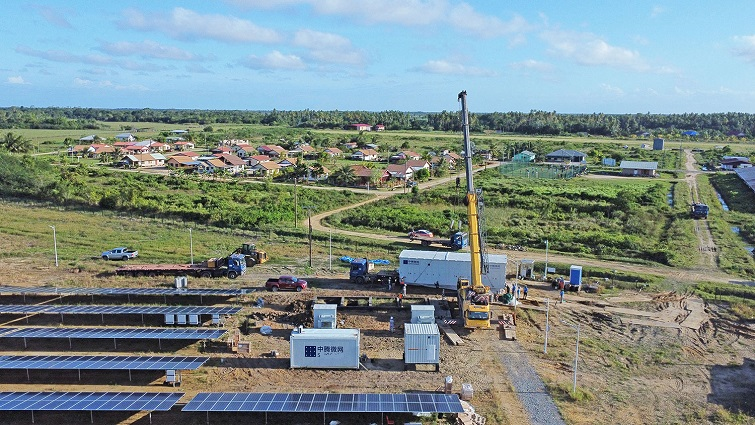
BRI: China helps Suriname solve power shortage in remote villages
Under the Belt and Road Initiative, China is helping local people in remote areas build small hybrid power plants in the South American country of Suriname. Nine of the villages are so remote that diesel can only be brought in by boat on the river.
In May 2018 Suriname signed a memorandum of understanding with China to jointly build the Belt and Road Initiative.
Currently the President of the Republic of Suriname, Chandrikapersad Santokhi, is on a state visit to China, where he met with Chinese President Xi Jinping in Beijing on April 12, 2024.
At the Beijing meeting the two countries signed a range of bilateral cooperation agreements in various areas including green development, economy and trade, digital economy, and education.
The rural microgrid photovoltaic project is being undertaken by Power Construction Corporation of China (PowerChina) under a 2019 agreement with Suriname.
Suriname’s Minister of Natural Resources, David Abiamofo, explained that energy supply in inland areas relies on the government to provide diesel fuel.
“Most inland villages only have electricity for a few hours a day. Therefore, continuous power supply, or 24 hours per day and seven days per week, is very important,” he said in a recent interview with Xinhua.
Half of Suriname’s total energy generation is sourced from hydroelectric plants. Minister Abiamofo said the government’s goal is to make sure that his country’s footprint becomes increasingly ecological. Currently, Suriname is one of the three carbon-negative countries in the world, the Minister said, adding that the South American country strives to provide renewable energy whenever possible.
Like many countries in South America, Suriname faces numerous challenges in economic development. The government of Suriname is committed to tackle the significant disparity between the coastal zone and the interior, where the interior faces significantly lower levels of access to services such as electricity.
In May 2020, the first rural microgrid photovoltaic project was officially put into operation, which solved the electricity problem in nearby villages. In October 2021, the second phase of the project was launched. The first hybrid power station in this stage was completed in June 2023, while the fifth power station is expected to be completed by the end of September 2025.
When the project is completed, electricity will be sent to nine villages via grid lines. The total length of the grid lines connecting the nine villages is 17 kilometers, with three sections needing to cross the river, plus another 5 kilometers through the primary forest.
Five power stations will be completed under the project and these will meet the electricity needs of 14,000 villagers in 50 inland villages.
In 2023, twenty staff from Suriname’s energy department visited China for training.
Sources:
- CGTN, Apr 13, 2024. https://youtu.be/6bM4zpNkv04
- Belt & Road Portal, Apr 12, 2024. https://eng.yidaiyilu.gov.cn/p/0S120L8H.html
- Global Times, Apr 13, 2024. https://www.globaltimes.cn/page/202404/1310517.shtml